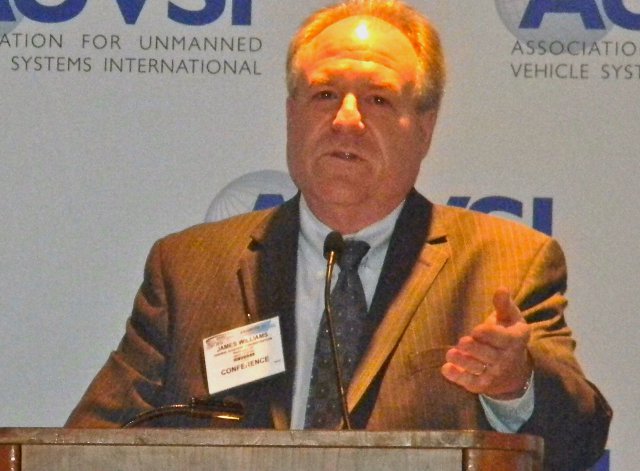The U.S. government should release a draft regulation governing the operation of small unmanned aircraft systems (UAS) by the end of the year, federal officials told the Unmanned Systems Conference this week. The Federal Aviation Administration also provided more information on two restricted category type certifications it awarded on July 19, for the first time permitting operators to fly unmanned aircraft commercially.
The FAA draft rulemaking governing operation of small UAS weighing up to 55 pounds,which the agency originally expected to release in December 2011, has been stalled within the federal government over privacy considerations. John Porcari, U.S.Department of Transportation deputy secretary, said his department and the White House Office of Management and Budget (OMB), are close to completing their vetting of the proposed rule.
“The small UAS rule is one that we’re committed to getting done,” said Porcari, who addressed the Washington, D.C., conference on Wednesday. “Given the topic and given some of the questions that have come up, it has taken more time than we would have liked it to have. We believe very strongly that it’s a rule that makes sense. It’s one that we’ve been working on closely with industry (and) with the regulatory people at OMBand we’re confident that we’ll be out fairly shortly with that (rule).”
On Tuesday at the Unmanned Systems Conference, Jim Williams, manager of the FAA’s UAS integration office, said the small UAS rule should be released for comment “by the end of this calendar year.”
Treating unmanned aircraft as “military surplus” facilitated the restricted category certifications granted to the Insitu ScanEagle and AeroVironment Puma AE in July, Williams said. “In order to do this as a commercial operation we had to find a way forward to certify these aircraft,” he explained. “The way we found was to use the restricted category type certificate process, which allows us to essentially approve military surplus aircraft. The military surplus rules require that it be an aircraft-by-aircraft approval; it’s not an approval that you can use to manufacture aircraft with.”
The certifications authorize operators to fly the ScanEagle and the Puma AE in Arctic airspace, as specified by Congress in the 2012 FAA Modernization and Reform Act. The legislation called for the designation of “permanent areas in the Arctic where small unmanned aircraft may operate 24 hours per day for research and commercial purposes.” The FAA also must develop a plan for these areas that enables beyond line-of-sight small UAS operations. The legislation defines “Arctic” as the U.S. zone of the Chukchi Sea, the Beaufort Sea and the Bering Sea north of the Aleutian island chain.
In separate interviews with AIN, representatives of Insitu and AeroVironment declined to identify which companies or entities will operate their aircraft. However, Williams said the FAA and ConocoPhillips have entered into a so-called “other transaction” agreement that enables the energy company to operate the catapult-launched ScanEagle from a ship to monitor whale movements and ice flows in the Chukchi Sea. “It’s like a contract, but there’s no money changing hands,” he said. “Essentially, theFAA agreed to facilitate the approvals. In exchange we’re getting a ton of data from ConocoPhillips about their operation.” The agency expects the first ConocoPhillips ScanEagle mission will take place early next month.
The FAA also certified UAS flown for research purposes under NASA’s Marginal Ice Zone Observations and Processes Experiment in the Beaufort Sea, which also involves the University of Colorado, the University of Alaska and the National Oceanic and Atmospheric Administration. The project began last summer and makes use of theNASA Sierra, the Insitu ScanEagle and a microUAS.
Photo: Jim Williams, manager of the FAA’s UAS integration office, spoke at the Unmanned Systems Conference on August 13 – Bill Carey
Source: AIN Online

